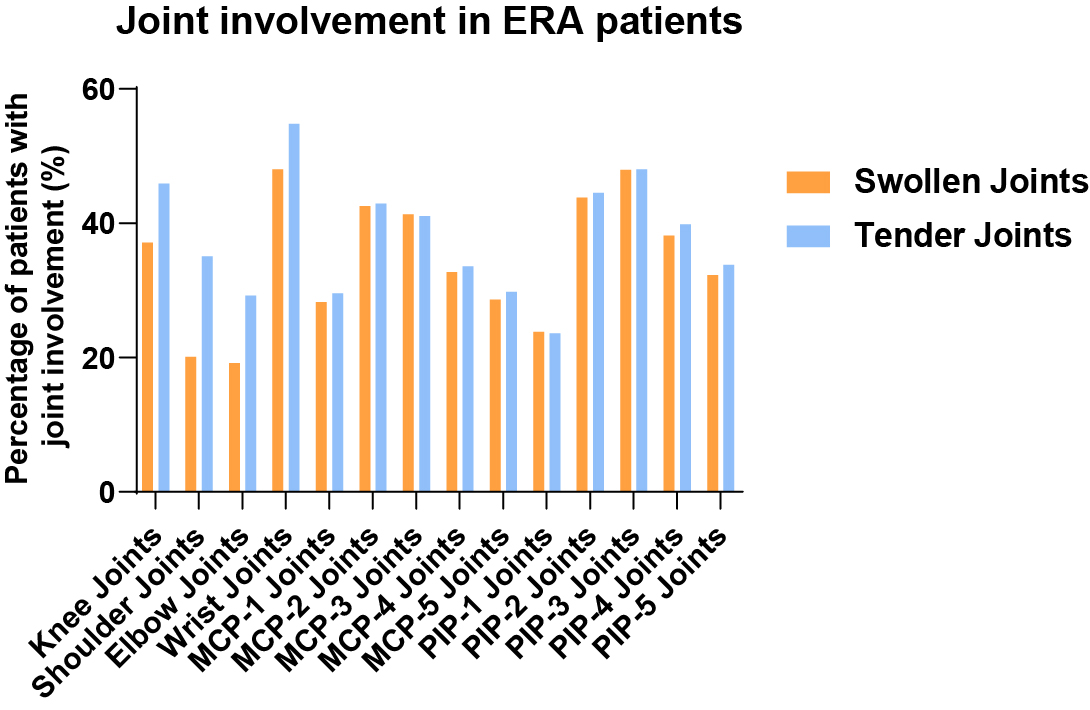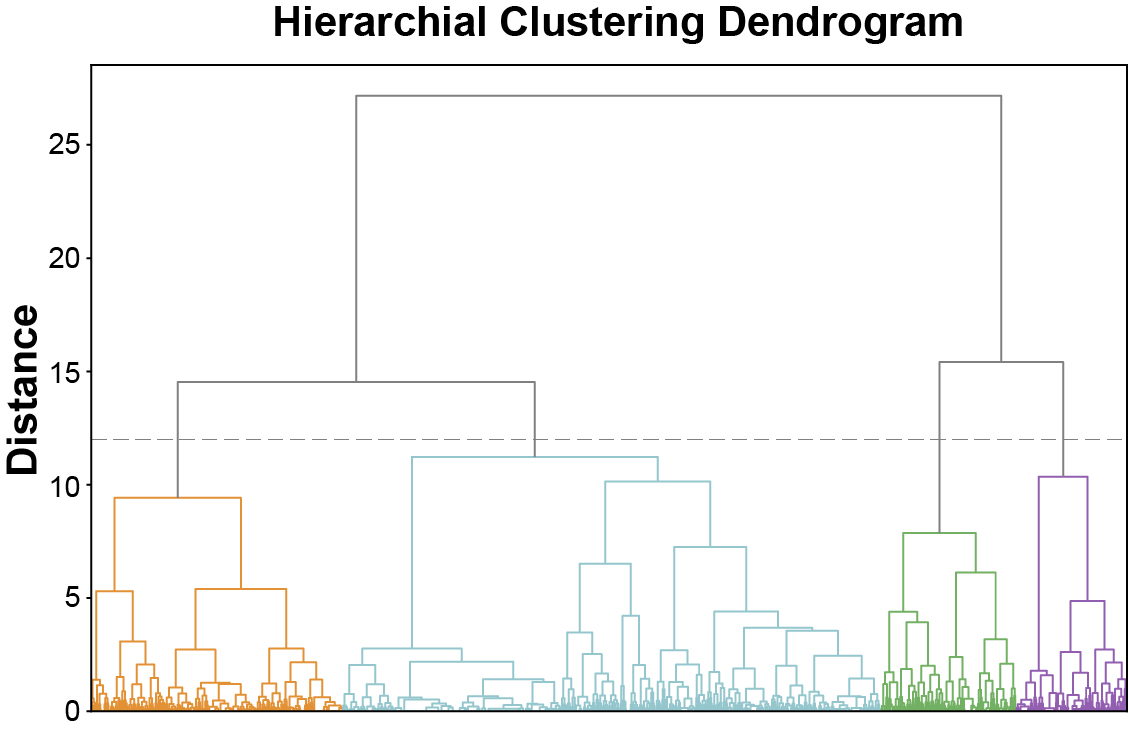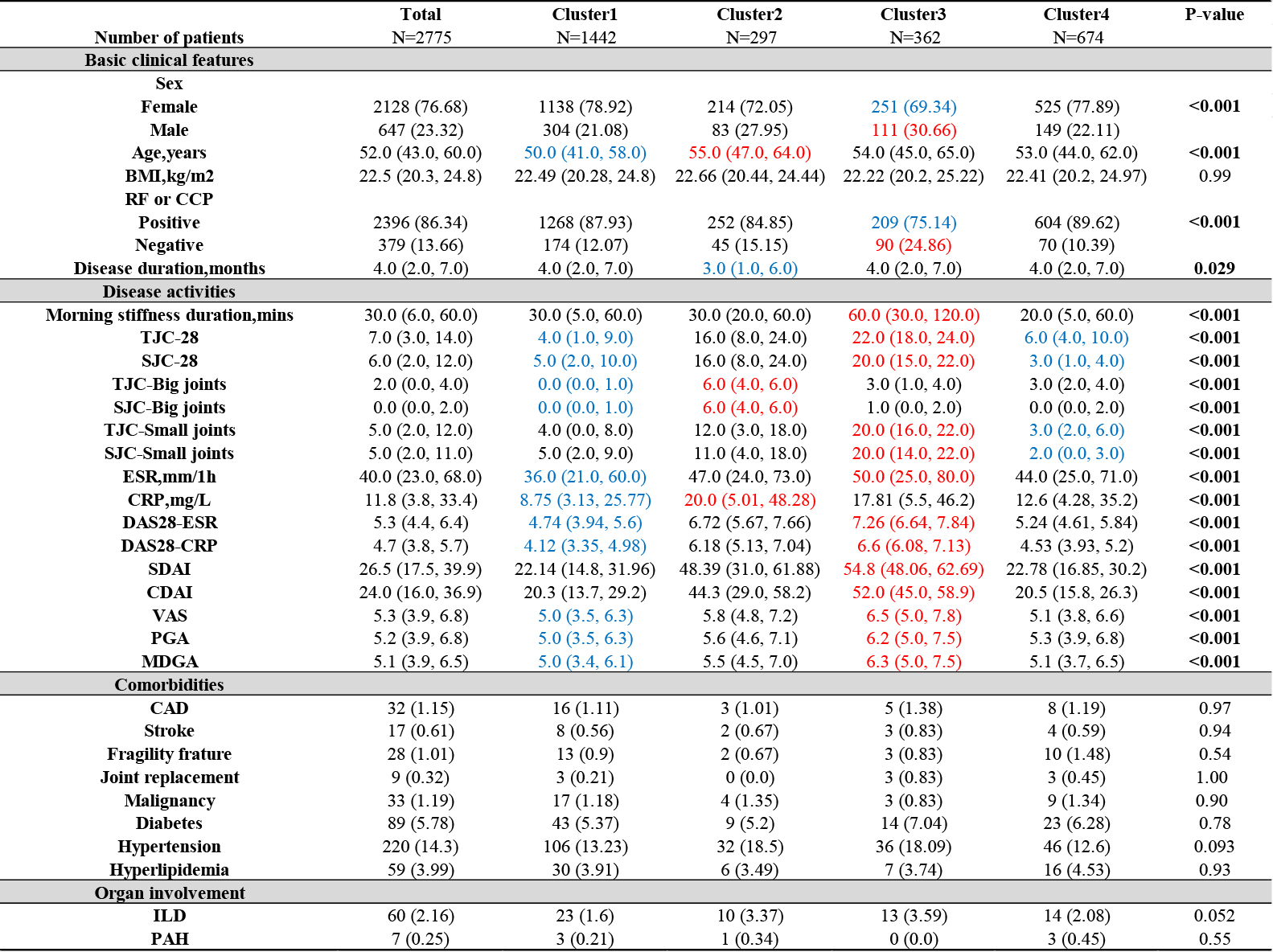Session Information
Session Type: Poster Session A
Session Time: 10:30AM-12:30PM
Background/Purpose: Rheumatoid Arthritis (RA) is a chronic inflammatory autoimmune disorder characterized by aggressive articular damage, and articular symptoms are often the initial and significant clinical manifestations of RA patients. The pattern of joint involvement may imply distinct clinical characteristics and therapeutic responses. However, to date few studies have investigated the profile of joint involvement in Chinese RA patients. This study aimed to elucidate the joint involvement pattern in early RA (ERA) patients in China utilizing cluster analysis.
Methods: Data was collected from CREDIT, a comprehensive, multicenter Chinese registry of rheumatoid arthritis. The study cohort comprised DMARD-naive RA patients with a disease duration of less than one year and moderate to high disease activity at baseline. An unsupervised hierarchical cluster analysis was performed, focusing on the joint involvement patterns of both large (including the knee, shoulder, and elbow) and small joints (including the wrist, MCP-1 to 5, and PIP-1 to 5), which accounted for both swelling and tenderness. A comparative analysis of clinical characteristics was conducted across the identified clusters. Logistic regression analysis was employed to evaluate the influencing factors of therapeutic responses in patients of different subgroups.
Results: A total of 2,775 patients were enrolled in the study. The most involved big and small joints in Chinese ERA patients were knee joints and wrist joints, respectively (Fig 1). Four distinct subgroups with different clinical features were identified by unsupervised cluster analysis (Fig 2). The majority of patients were categorized into Cluster1, which comprised the youngest individuals with the least joint involvement and the lowest disease activity. Patients in the Cluster2 and Cluster3 exhibited a higher number of affected joints, with Cluster2 showing more pronounced involvement in large joints and Cluster3 presenting more involvement in small joints. These two clusters predominantly included older patients with the highest disease activity. Additionally, Cluster3 was also characterized by the highest proportion of male patients, the highest prevalence of seronegative patients, and the longest duration of morning stiffness. Patients in Cluster4 showed joint involvement patterns similar to those in Cluster1, but with fewer small joints and more large joints affected, and a modestly higher disease activity (Table1). Subsequent regression analysis indicated that the factors influencing treatment outcomes varied among different patient subgroups.
Conclusion: The joint involvement among Chinese ERA patients displayed discernible patterns, with unsupervised cluster analysis effectively stratifying patients into four unique subgroups. Each subgroup of patients presented specific clinical characteristics and therapeutic response. The categorization of ERA patients based on joint involvement patterns could be useful to predict therapeutic outcome and develop more appropriate treatment strategies.
To cite this abstract in AMA style:
Deng Y, Yu C, Qiao L, Jiang N, Wang Y, Tian X, Wang Q, Li M, Zeng X. Cluster Analysis Based on Joint Characteristics: A Study of Joint Involvement Profiles in Early Rheumatoid Arthritis (ERA) Patients in China [abstract]. Arthritis Rheumatol. 2024; 76 (suppl 9). https://acrabstracts.org/abstract/cluster-analysis-based-on-joint-characteristics-a-study-of-joint-involvement-profiles-in-early-rheumatoid-arthritis-era-patients-in-china/. Accessed .« Back to ACR Convergence 2024
ACR Meeting Abstracts - https://acrabstracts.org/abstract/cluster-analysis-based-on-joint-characteristics-a-study-of-joint-involvement-profiles-in-early-rheumatoid-arthritis-era-patients-in-china/



